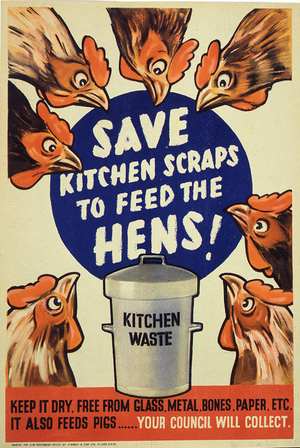CROP ROTATION is most important
Some gardening beginners have no doubt been puzzled by the term “crop rotation.” It sounds a bit mysterious, but it is really quite simple. And it is the only sound basis for vegetable growing.
To be a successful gardener you must be methodical. What does “crop rotation” mean? Simply arranging your cropping is such a ways to avoid growing the same kinds of crops on any section of your plot one year after another. To grow the same crop on the same ground year after year is bad gardening for several reasons. There is also the risk that diseases and pests will be increased in the soil to attack again the following year.
Rotation of vegetable crops affects the condition of your land in four important ways.
- It ensures that every part of your plot carriers, at regular intervals, crops that require thorough soil cultivation.
- It helps to maintain the content of plant food and humus in all parts of the plot. Some crops will repay for heavier dressing of fertilisers than others, and some will get what farmyard manure or compost is available.
- It helps to control weeds, for different crops need different cultivations at different seasons; though weeds may withstand the appropriate cultivations for one crop, they may be kept down by the cultivations for another crop.
- It helps to control pests and diseases.
The Ministry of Agriculture recommends a three-year “crop rotation” for a 300 sq. yd. plot, and its official cropping plan, which is free for the asking, has enjoyed a wide circulation.
It was not intended that gardeners should follow it slavishly, for what suits one part of the country does not suit another. And people have different tastes in vegetables. The Ministry’s plan aims at two important things – crop rotation and a sufficiency of vegetables throughout the year, especially in winter when so many gardens still show the scarcity of crops that results from poor planning.
A 3 course crop rotation is still the most popular system because of its simplicity. The ministry advocated system has some drawbacks, most notably mixing the root crops with the potatoes. Potatoes being a very greedy crop, like the addition of manure to the ground in the preceding winter but carrots and parsnips do not have the same high nutrient demand.
The ministry plan gets around this by using additional of National Growmore fertiliser for the potatoes.
Many gardeners now avoid maincrop potatoes due to the increased virulence of blight and the lack of available effective chemical control. Until relatively recently potato blight was controlled by the prophylactic use of Bordeaux Mixture. So with less potatoes being grown, giving over a third of the plot to them no longer makes sense.
Gardeners now also grow crops like sweetcorn which was a rarity in the war. It only became a popular crop with the development of strains that thrive in our British climate. Some gardeners have moved onto 4 or even 5 course plans. The problem is that the more complex the rotation scheme, the less chance of it being adhered to in practice.
The most important rule of crop rotation is not to grow the same thing in the same place year upon year. That really does ask for trouble with pests and nutrient deficiencies


